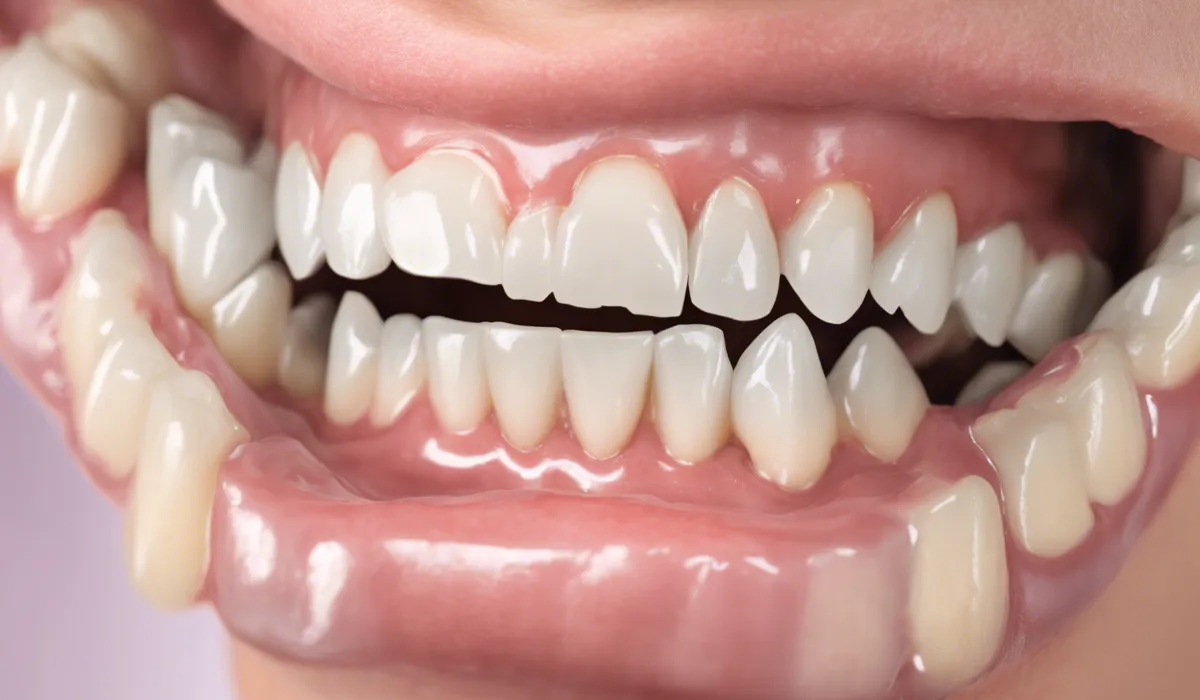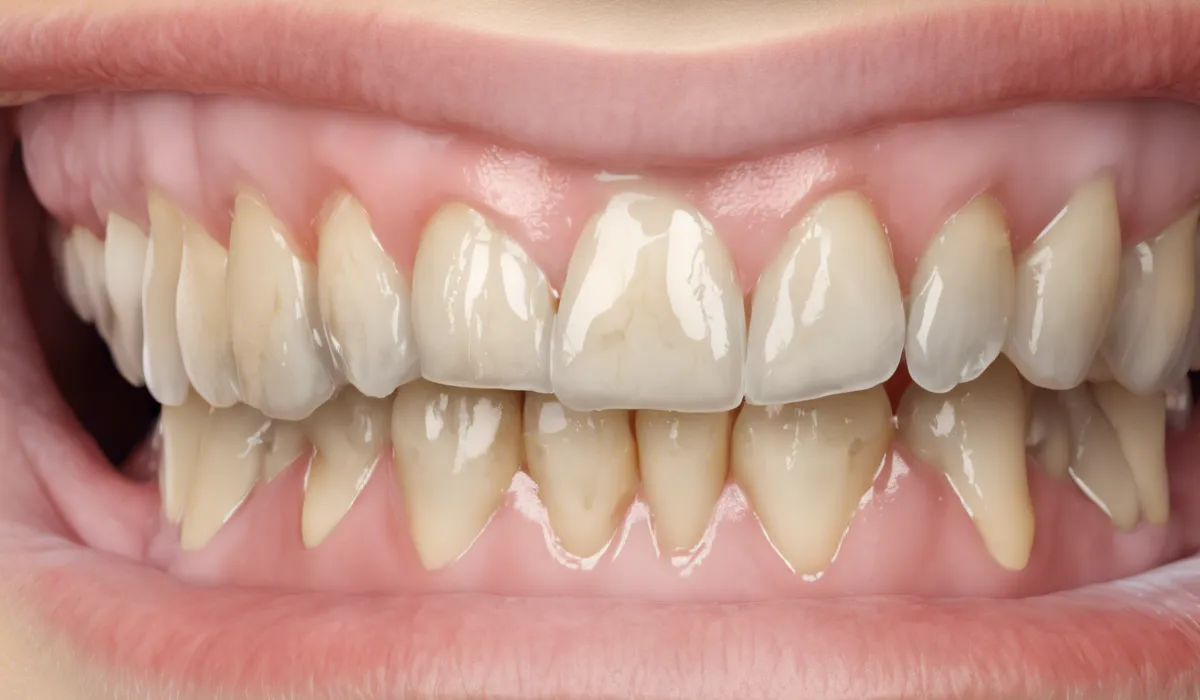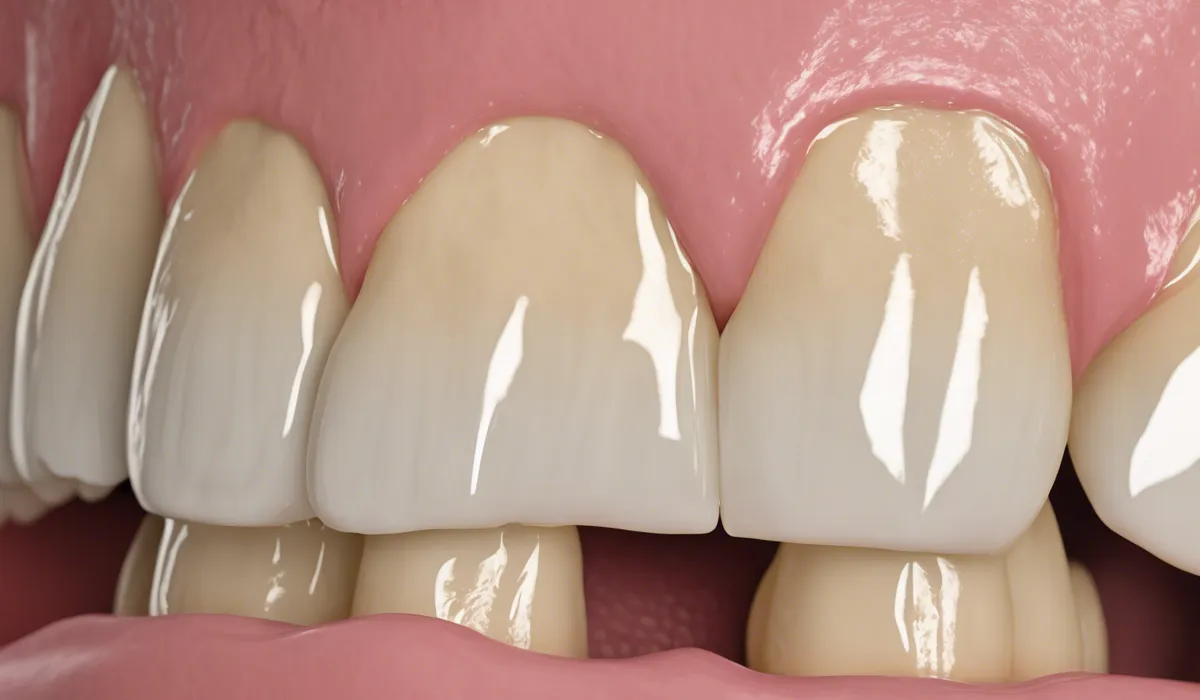Yes, mold can grow on teeth if dental hygiene is poor and conditions are favorable for fungal growth. This is rare and usually involves a specific fungus rather than common molds. Regular brushing and dental check-ups can prevent this issue.
Understanding Dental Mold and Its Causes

What Is Dental Mold?
When we talk about dental mold, we’re usually referring to a specific type of fungus that can grow in the mouth, not the typical mold you might find on old food or damp walls.
This mold-like fungus can take hold on the teeth or gums if the environment in your mouth becomes imbalanced.
Plaque, Tartar, and Mold: Knowing the Difference
It’s important to distinguish between dental mold and the more common conditions of plaque and tartar.
Plaque is a sticky film of bacteria that forms on your teeth, while tartar is hardened plaque that has been left untreated.
Neither of these is a fungus, though they can lead to serious dental issues if not addressed.
Conditions Favoring Mold Growth
Certain conditions can make your mouth a more welcoming place for fungi.
These include having a dry mouth, taking antibiotics that disrupt the natural balance of your mouth’s microorganisms, and smoking, which can alter the environment of your mouth, making it easier for fungus to thrive.
The Role of Oral Hygiene
Poor oral hygiene is often at the root of dental discoloration and mold-like formations.
When you don’t brush or floss regularly, you allow bacteria and fungi to build up, leading to potential infections and growths that can resemble mold on your teeth.
Impact of Diet and Lifestyle
Certain foods, drinks, and lifestyle choices can also impact the appearance of your teeth. Dark-colored beverages like coffee, tea, and red wine can stain your teeth, while sugary foods can feed harmful bacteria.
Additionally, tobacco use can cause a range of oral health problems, including discoloration that might be mistaken for mold.
Health Risks and Symptoms of Mold-like Growth on Teeth

Recognizing Signs of Fungal Issues
Signs of a fungal issue in your mouth can include white patches on your gums, tongue, or inner cheeks, as well as a general feeling of discomfort in your mouth.
These symptoms can indicate the presence of oral thrush, a common fungal infection.
Potential Health Risks of Oral Fungus
While oral thrush itself can be uncomfortable, it can also be a sign of a deeper issue with your immune system.
If left untreated, the infection can spread to other parts of your body, leading to more serious health problems.
Systemic Health and Oral Fungus
There is a strong connection between your systemic health and the health of your mouth.
Diseases like diabetes can increase your risk of fungal infections, while an oral fungal infection can be a sign of a compromised immune system.
When to Worry About Discoloration?
While some tooth discoloration is normal, particularly with age, sudden changes or the appearance of white, yellow, or dark spots can be a sign of a more serious condition.
If you notice significant changes in the color of your teeth, it’s important to see a dentist as soon as possible.
Prevention and Treatment Options for Mold on Teeth

Maintaining Good Oral Hygiene
To prevent fungal growth in your mouth, practicing good oral hygiene is key. This includes brushing your teeth at least twice a day, flossing daily, and using mouthwash to help kill harmful bacteria and fungi.
The Importance of Professional Dental Cleaning
Regular professional dental cleanings are crucial for maintaining oral health. A dentist or hygienist can remove plaque and tartar that you can’t reach with a toothbrush, helping to prevent the conditions that allow fungus to grow.
Treatment for Fungal Infections
If you do develop a fungal infection like oral thrush, there are treatments available. Antifungal medications can be prescribed by your dentist or doctor to help clear up the infection.
Home Remedies and Natural Treatments
There are also home remedies and natural treatments that can help combat mold-like symptoms in your mouth.
These include eating yogurt with live cultures or taking probiotics to help restore the natural balance of microorganisms in your mouth.
Regular Dental Check-Ups for Early Detection
Finally, regular dental check-ups are essential for early detection and treatment of any oral health issues, including fungal infections.
By seeing your dentist regularly, you can catch potential problems early and keep your mouth healthy.
FAQs About Mold on Teeth
Can mold actually grow on human teeth?
Yes, mold can grow on teeth, but it is a rare occurrence and typically involves a specific type of fungus, not common molds.
What conditions allow mold to grow on teeth?
Mold can grow on teeth when dental hygiene is poor and the environment in the mouth becomes favorable for fungal growth, such as moisture and organic material build-up.
How can you prevent mold from growing on your teeth?
Regular brushing, flossing, and dental check-ups are essential to prevent mold and other fungal infections in the mouth.
Is it common to have mold on teeth?
No, it is quite rare to have mold growth on teeth, as the conditions in a healthy mouth typically prevent fungal growth.
What should you do if you suspect mold growth on your teeth?
If you suspect mold growth on your teeth, you should see a dentist as soon as possible for an evaluation and appropriate treatment.
Final Thoughts
Mold growth on teeth is an uncommon phenomenon that can occur with inadequate dental hygiene under certain conditions.
It typically involves a specific type of fungus rather than the usual household molds. Maintaining a regimen of regular tooth brushing and scheduling dental check-ups is crucial to prevent such fungal infections.
